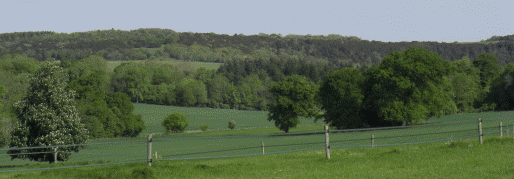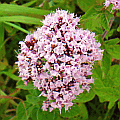
Kingley Vale national Nature Reserve
The highlight of Kingley Vale is the yew woodland which covers much of its southern slopes. A small number of the trees are very old indeed - probably over 500 years old. Before man and sheep started to have an impact on the landscape of the South Downs, yew forests were relatively common. Now they are rare.
The age and history of the yew trees at Kingley Vale was researched extensively by ecologist Sir Arthur Tansley, who lobbied hard for years for something to be done for the protection of this special habitat. His lobbying paid off when, in 1952, Kingley Vale was named as one of the first National Nature Reserves in the country.
Sir Arthur's contribution to the preservation of the environment at Kingley Vale is marked by a chunky memorial stone near the top of Bow Hill.
Within the National Nature Reserve there is a discreetly signposted nature trail organised by English Nature. The views from the several places at and near the top are tremendous, both to the north and the south.
Bow Hill, which forms part of Kingley Vale, is topped by The Devils Humps, two Bronze Age barrows.
There are all sorts of stories of strange comings and goings on Kingley Vale, with marching legions of Romans Soldiers and so on. Other stories tell of the defeat of a band of Vikings whose warlike spirits still maraud in the woodland.
Whatever the truth, Kingley Vale is definitely a spooky place at night.
The nearest villages to Kingley Vale are West Lavant, West Stoke (where you can park), Woodend, Chilgrove and Stoughton.
Kingley Vale hotels and bed and breakfast
- Arundel
- Bognor Regis
- Burgess Hill
- Chichester
- Crawley
- East Grinstead
- Haywards Heath
- Horsham
- Littlehampton
- Midhurst
- Petworth
- Shoreham-by-Sea
- Steyning
- Worthing




